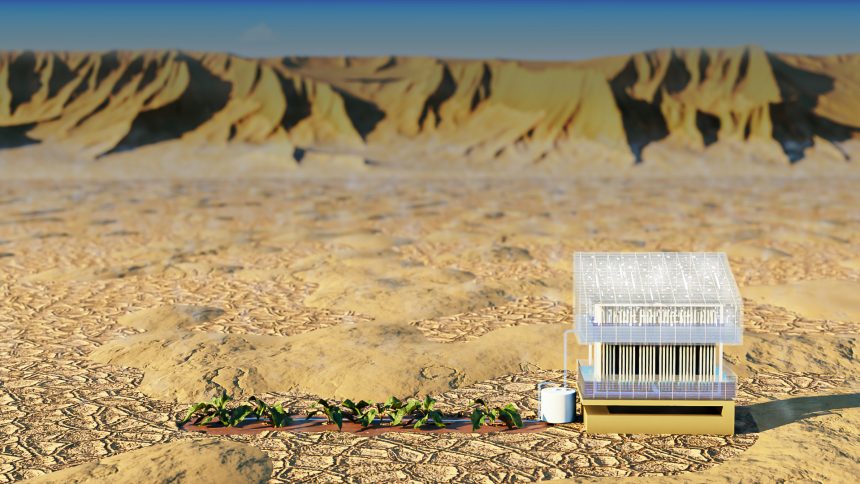
A solar-powered water harvester rendering developed by KAUST researchers can extract 2 to 3 liters of water per day during the summer months. Courtesy.
Expensive emergency-style devices used by armies can be run by generators and pull water from air, similar to how air conditioners work. Additionally, here are 5 ways you can re-use your air conditioner water. Water generation companies, such as Israel’s Watergen, have been in the market for a decade and have integrated with solar systems. They are utilized by agriculture developers for hydroponics in off-grid locations and can also be found in hotels where water needs to be transported weekly. Even in countries like Jordan, weekly water deliveries are still common!
Related: stackable emergency shelters
New advances in Saudi Arabia from KAUST, an expat-majority university, claim to have developed enhancements to energy-intensive water generation from air systems, seamlessly integrating solar power. This innovation builds upon the work of Hungarian-American inventor Maria Telkes, who created a zero-energy passive water extractor that could be optimized for use in disaster zones such as earthquake-stricken regions like Turkey.
Despite the arid conditions in many parts of the world, moisture in the air can provide valuable water for drinking and irrigation. Extracting water from air is challenging due to its energy-intensive nature, but a new technology from KAUST researchers in Saudi Arabia can extract liters of water from thin air each day without requiring regular manual maintenance.
While water harvesting from air is not a new concept, existing solar-powered systems are often cumbersome. According to postdoc Kaijie Yang, who led the study, the new harvester developed at KAUST operates in a more efficient and cost-effective manner, cycling continuously without intervention between two stages to capture and extract water.
The system utilizes mass transport bridges inspired by natural plant processes, with vertical microchannels filled with a salt solution that absorbs water through capillary action. During testing in Saudi Arabia, the system produced 2 to 3 liters of water per square meter per day in the summer, demonstrating its potential for irrigation and water generation in arid regions.
By optimizing mass and heat transport within the system, the researchers were able to enhance its efficiency and effectiveness. The materials used in the system were selected for affordability and availability, making the technology suitable for large-scale application in low-income areas, according to senior author Qiaoqiang Gan.






